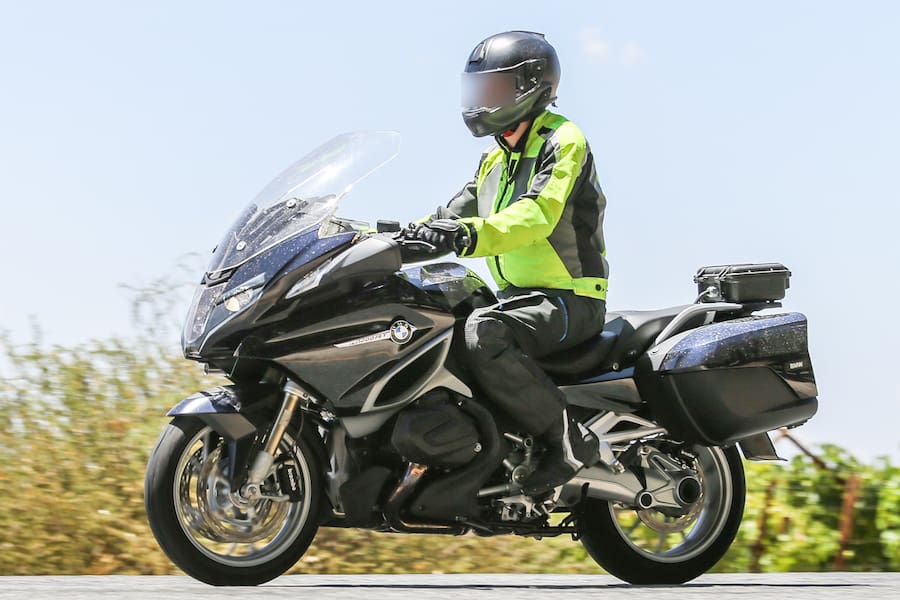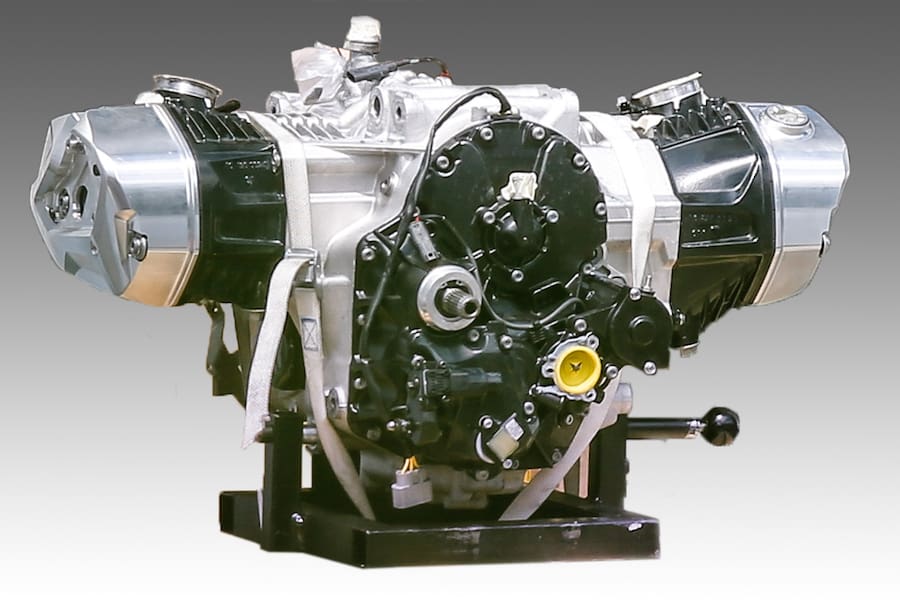Variable valve timing planned for big-bore Boxer range
If you saw this black BMW RT riding past, you probably wouldn’t give it a second glance, though there’s a small datalogger attached that indicates there’s something new. But that small plastic top-box is a giveaway that this is something other than a normal BMW.
It’s the on-board datalogger of a prototype, and closer inspection reveals that this might actually be a quite revolutionary machine.
The plastic cover over the spark-plug wiring is the first indicator. Instead of running forward, as on the current bike, it goes back and then up.
A different exhaust is fitted too, with headers that take a different route to the current bike, requiring a redesign to the lower fairing sections.
We also got our hands on an image of an engine that matches the one powering the pictured prototype RT. It confirms the cam covers are completely new, while the cylinders, crankcase and head castings don’t seem to have changed much externally. It’s clearly a development of the current part water-cooled motor rather than a completely new unit.
It points to the BMW having added a form of variable valve timing. Rumours the firm was working on such a system started last year, and this image adds weight.
Ducati has already shown that VVT makes sense on twin-cylinder bikes, adding a cam-phasing system to its Diavel and Multistrada models that alters the intake valve timing depending on revs.
With Euro5 emissions limits growing ever nearer – they’re currently due to be imposed from 2020 – many expect variable valve timing to become far more common as a way to cut exhaust emissions at low revs without castrating the top-end performance of petrol engines.
The engine is also overdue for a capacity hike. It’s been steady at 1170cc since the introduction of the R1200GS in 2004. With Ducati’s Multistrada hitting 1262cc this year, it makes sense BMW will react. A hike to around 1250cc will give a fractional performance improvement but, perhaps more importantly, will let BMW use the R1250 title to distinguish future VVT-powered boxers from its predecessors.
The new engine should spread across BMW’s water-cooled boxer range, with the R1200GS and R1200R getting the motor as well as the R1200RT you see here.
One intriguing thing the picture reveals is an enormous tablet-style instrument panel. It’s not clear whether this is a planned development for future models or simply an add-on as part of the prototype. Time will tell!

Euro5 anyone?
Like all manufacturers, BMW is planning ahead, and Alpha Racing has already developed a VVT cylinder head for the BMW boxer engine. The design is very similar to BMW’s Valvetronic arrangement used in its cars. Alpha Racing unveiled an R1200GS fitted with what it called VVL at Intermot in 2016 and claims a power increase from 92kW to 107kW, with torque rising from 125Nm to 131Nm. Fuel consumption and emissions were also claimed to be reduced. These are impressive improvements given there were no changes made to the engine’s capacity or compression ratio.

Who else?
Ducati uses variable valve timing (VVT) on its Diavel and Multistrada models, while Kawasaki has used a similar system on the 1400GTR for a decade. BMW has long used this technology on its four-wheelers, introducing what it called VANOS in 1992.
By Ben Purvis